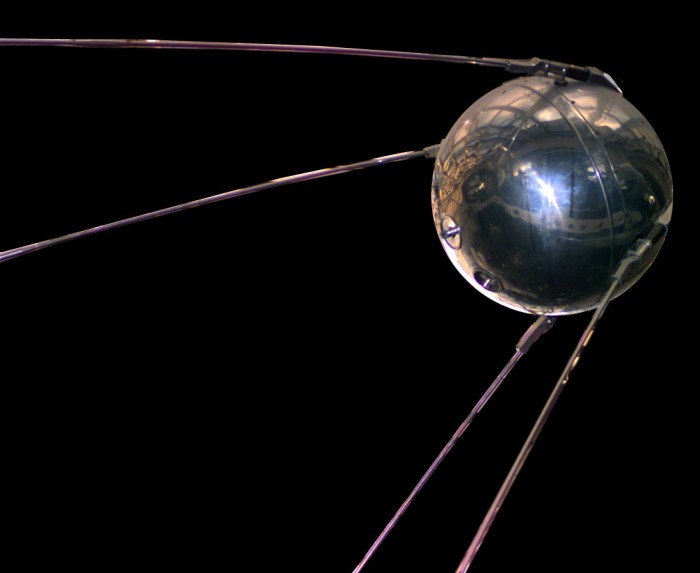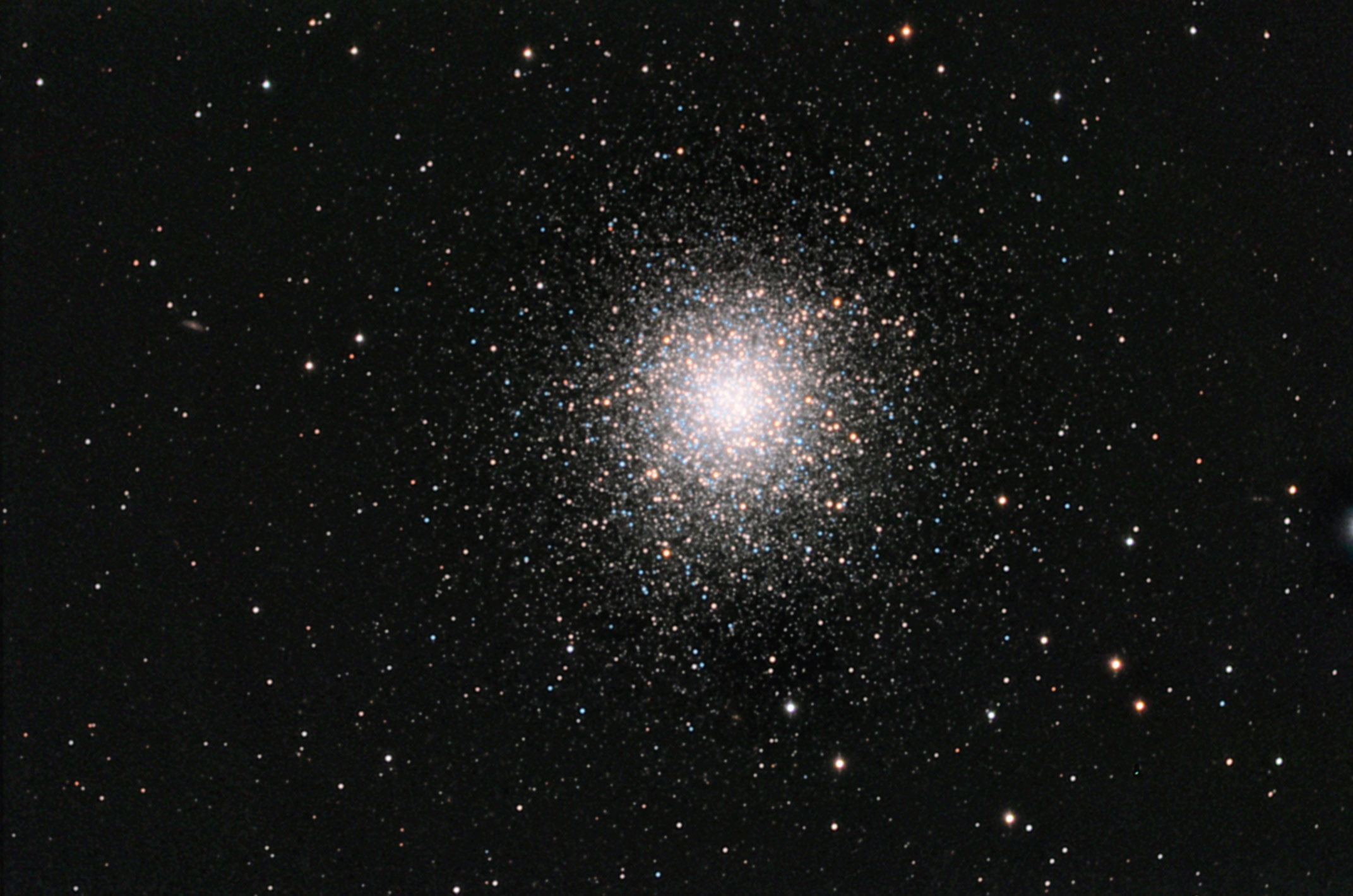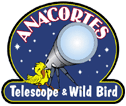Sputnik 1 – 65 Years Ago Today

Sputnik 1 -- the first artificial satellite to be placed into Earth orbit. This replica is stored in the National Air and Space Museum. Launched on October 4, 1957 from the Soviet Union's rocket testing facility in the desert near Tyuratam in the Kazakh Republic, Sputnik 1 proved to be a decidedly unspectacular satellite that probably should not have elicited the horrific reaction it wrought. An aluminum 22-inch sphere with four spring-loaded whip antennae, it weighed only 183 pounds and traveled an elliptical orbit that took it around the Earth every 96 minutes. It carried a small radio beacon that beeped at regular intervals and could, by means of telemetry, verify exact locations on the Earth's surface. (Image Credit: National Air and Space Museum)
Sputnik 1 – 65 Years Ago Today
History changed 65 years ago today, on October 4, 1957, when the Soviet Union successfully launched Sputnik 1. The world's first artificial satellite was about the size of a beach ball -- about 23 inches in diameter -- and weighed less than 190 pounds. It took about 98 minutes to orbit the Earth on its elliptical path. That single launch ushered in a whole array of new political, military, technological, and scientific developments in the years that followed. While the Sputnik launch was a single event, it marked the start of the Space Age… and the US - USSR space race.
While President Eisenhower and other leaders of his administration congratulated the Soviets and tried to downplay the importance of the accomplishment, they misjudged the public reaction to the event. The launch of Sputnik 1 had a "Pearl Harbor-like" effect on the American public psyche. It was a shock that exposed a significant technological gap in US capabilities and in the years to come, provided the necessary impetus for increased spending in aerospace endeavors, technical and scientific educational programs, and the chartering of new federal agencies to manage air and space research and development.
Like the Soviet Union, the United States was planning to launch a satellite as part of the International Geophysical Year (IGY). Caught off-guard, the American public felt echoes of the Japanese attack on Pearl Harbor less than 16 years before. Americans feared that the Soviets, whom they believed were behind the US technologically after the devastation of World War II, could launch ballistic missiles armed with nuclear weapons at the United States.
Sputnik's launch led the US government to focus and consolidate space exploration programs in different agencies, and on January 31, 1958, the US Army launched Explorer I. This satellite carried a small scientific payload that discovered the magnetic radiation belts around the Earth, later named after principal investigator James Van Allen. That summer, Congress and President Eisenhower created NASA, which came into being October 1, 1958.
Sputnik's launch created a rivalry that lasted decades and eventually resulted in Americans landing on the Moon, but which ultimately gave way to cooperation and collaboration.
According to historian Roger D. Launius, Sputnik 1, launched on October 4, 1957 from the Soviet Union's rocket testing facility in the desert near Tyuratam in the Kazakh Republic, proved to be a decidedly unspectacular satellite that probably should not have elicited the horrific reaction it wrought. The aluminum 23 inch sphere with four spring-loaded whip antennae weighed only 183 pounds and traveled an elliptical orbit that took it around the Earth every 96 minutes. It carried a small radio beacon that beeped at regular intervals and could by means of telemetry verify exact locations on the Earth's surface. Some US cold warriors at the time feared that this was a way for the Soviets to obtain targeting information for their ballistic missiles, but that was certainly not the case. The satellite itself fell from orbit three months after launch on January 4, 1958.
Not only had the Soviets been first in orbit, but Sputnik 1 weighed nearly 200 pounds compared to the intended 3.5 pounds for the first US satellite to be launched in Project Vanguard. In the Cold War environment of the late 1950s, this order-of-magnitude disparity of capability portended menacing implications.
Even before the effects of Sputnik 1 had worn off, the Soviet Union struck again. On November 3, 1957, less than a month later, it launched Sputnik 2 carrying a dog, Laika. While the first satellite had weighed less than 200 pounds, this spacecraft weighed 1120 pounds and stayed in orbit for almost 200 days -- approaching nearly a two-order-of-magnitude advantage in payload weight.
Dr. Eilene Galloway, often called "the grand matriarch of space law," played vital roles in the drafting of NASA's founding legislation while working for Senator Lyndon B. Johnson (LBJ) of Texas. She also worked to create the United Nations Committee on the Peaceful Uses of Outer Space (COPUOS).
In August 2007, Galloway wrote an essay (reference below) that tells how, as a congressional researcher, she came to work for Johnson and helped him bring NASA into existence. Portions of her writings, which follow, capture the thinking of the US at the time of the first Sputnik launch.
"The orbiting of Sputnik by the Soviet Union on Oct. 4, 1957 created worldwide fear of weapons of mass destruction. Lyndon B. Johnson who was then chairman of the Senate Preparedness Investigation Subcommittee of the Senate Armed Services Committee, worried that the Soviet Union was surpassing the United States in missile technology. He decided to hold hearings on how to cope with the problem."
"On Nov. 25, 1957, LBJ began the "Inquiry into Satellite and Missile Programs." The initial assumption was that we faced a military problem. By Jan. 23, 1958, we had recorded 1377 pages of testimony by preparedness experts. But it was the testimony of scientists and engineers from many sectors, including the International Geophysical Year (IGY) that helped change our perception of the problem. These witnesses discussed the important practical applications of space that NASA could facilitate, including long-term meteorological forecasts and rapid long-range radio communications. The exploration of Mars and Venus was foreseen. Manned satellites were predicted, even the landing of a man on the Moon and his safe return to Earth. The solution to the problem of opening the outer space environment would have been incomplete without the input of scientists and engineers."
"While our first reaction was that we faced a military problem of technology inferiority, the testimony from scientists and engineers convinced us that outer space had been opened as a new environment and that it could be used worldwide for peaceful uses of benefit to all humankind, for communications, navigation, meteorology, and other purposes. Use of space was not confined to military activities. It was remarkable that this possibility became evident so soon after Sputnik and its significance cannot be understated. The problem became one of maintaining peace rather than preparing the United States to meet the threat of using outer space for war. Fear of war changed to hope for peace."
"In April, 1958, President Eisenhower sent the text of the proposed bill creating the National Aeronautics and Space Agency (NASA) to House majority leader John McCormack of Massachusetts. When the bill came to the Senate Special Committee on Space and Astronautics, chaired by Senate Majority Leader Lyndon B. Johnson (LBJ), the administration status of NASA was approved."
"Eisenhower invited LBJ, who was the Senate's Democratic leader, to go to the United Nations to propose the creation of the Committee on the Peaceful Uses of Outer Space (COPUOS) with its Legal Subcommittee and the Scientific and Technical Subcommittee. The role of COPUOS was to safeguard the right of people of all nations to beneficial results from space exploration by providing assistance for research, exchange and dissemination of information, encouraging national research programs and studying legal problems arising from space exploration. Both fear and hope brought countries together in cooperation."
LBJ addressed the UN Committee, in November 1958, on behalf of the president and said "Initially, the Soviet Union, Czechoslovakia, and Poland refused to participate in COPUOS which was created as an ad hoc committee based on majority voting. However, they became members a year later when it was decided that all COPUOS decisions would be made by consensus. COPUOS developed a number of space law treaties, including the "Treaty on Principles Governing the Activities of States in the Exploration and Use of Outer Space, including the Moon and Other Celestial Bodies," which recognized the common interest of all mankind in the progress of the exploration and use of outer space for peaceful purposes. Although consensus decision making takes time, it provides a very strong basis for the signatory nations to comply with the treaties."
For more information:
https://www.nasa.gov/specials/60th/sputnik/
https://history.nasa.gov/sputnik/sputorig.html
https://www.nasa.gov/feature/sputnik-and-the-creation-of-nasa-a-personal-perspective
https://astromart.com/news/show/happy-birthday-nasa-50-years-of-the-right-stuff
Astromart News Archives:
https://www.astromart.com/news/search?category_id=3&q=.
Check out some of my favorite Words of Wisdom:
https://astromart.com/news/show/words-of-wisdom-my-favorite-quotable-quotes
https://astromart.com/news/show/words-of-wisdom-my-favorite-proverbs-from-around-the-world
Do you enjoy reading these postings?
Then click here and buy the Astromart staff a cup of coffee (and maybe even some donuts):
https://astromart.com/support-options
Funding Member
Sponsors
- SellTelescopes.com
- OMI OPTICS USA LLC
- BW
- APM-Telescopes
- FocusKnobs
- BBLABS LLC
- Waite Research
- astronomy-shoppe
- ASTROPHOTOGRAPHY BY MARTIN PUGH
- Astromart Customer Service
- Bob's Knobs
- Rouz Astro
- AstroMart LLC
- RemoteSkies.net
- Matsumoto Company
- Anacortes Telescope
- Desert Sky Astro Products
View all sponsors



